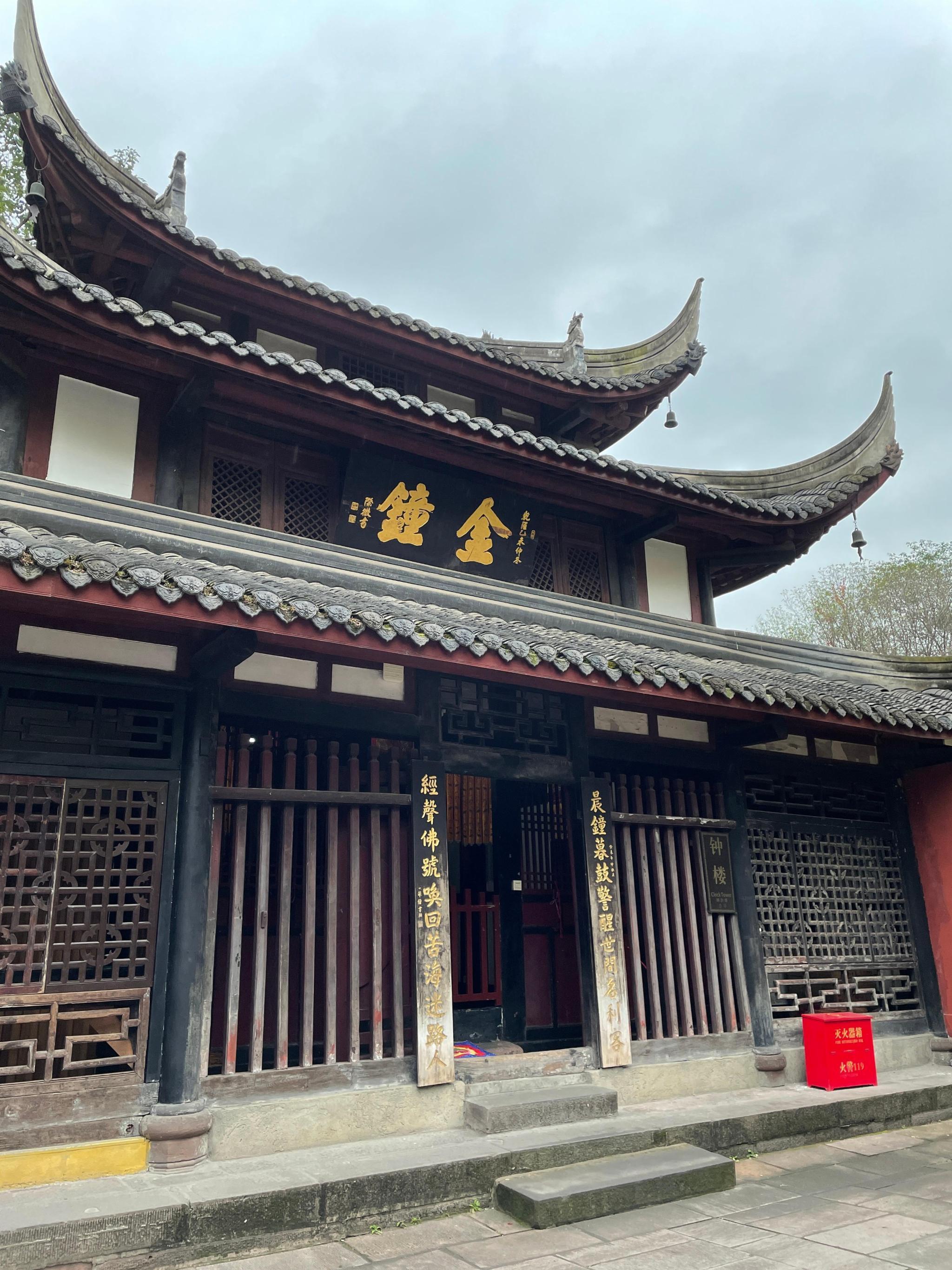
Wenshu Monastery
Wenshu Monastery is located in Qingyang District. It was initially built in the Sui Dynasty and was renamed Wenshu Monastery after being rebuilt during the Kangxi reign of the Qing Dynasty. Inside the monastery, there are more than 300 Buddha statues of various sizes, made of different materials such as iron, steel, gauze, wood, stone, and clay. Among them, there is a Burmese jade Buddha, which is from Myanmar and is very precious. In the monastery, five main halls, namely the Hall of Three Bodhisattvas, the Daxiong Hall, the Dharma Hall, and the Sutra Library, are connected in sequence, integrating perfectly with the bell tower, the vegetarian dining hall, and the corridors on the east and west sides. Together with other buildings, they form a closed quadrangle. There is also a teahouse and a characteristic vegetarian restaurant named "Xiangzhai Hall" in the monastery, making it a favorite leisure place for local residents. In addition, the monastery also treasures many precious works of calligraphy and paintings since the Ming and Qing Dynasties. The well - known ones are the "Konglin" plaque bestowed by Emperor Kangxi on Wenshu Monastery in 1702 and Emperor Kangxi's copy of Mi Fu's "Haiyue" scroll from the Song Dynasty. There are also Buddhist cultural relics such as the skull bone of the eminent monk Xuanzang from the Tang Dynasty, Indian palm - leaf scriptures, and the gilded Buddhist scriptures from Japan in the Tang Dynasty. However, due to their preciousness, outsiders rarely get to see them. Wenshuyuan Street in front of Wenshu Monastery has now been developed into Wenshu Fang, known as the "Urban Buddhist Forest". It is full of antique buildings in imitation of ancient styles, and many snack shops are still in business.
Wenshu Monastery is located in Qingyang District. It was initially built in the Sui Dynasty and was renamed Wenshu Monastery after being rebuilt during the Kangxi reign of the Qing Dynasty. Inside the monastery, there are more than 300 Buddha statues of various sizes, made of different materials such as iron, steel, gauze, wood, stone, and clay. Among them, there is a Burmese jade Buddha, which is from Myanmar and is very precious. In the monastery, five main halls, namely the Hall of Three Bodhisattvas, the Daxiong Hall, the Dharma Hall, and the Sutra Library, are connected in sequence, integrating perfectly with the bell tower, the vegetarian dining hall, and the corridors on the east and west sides. Together with other buildings, they form a closed quadrangle. There is also a teahouse and a characteristic vegetarian restaurant named "Xiangzhai Hall" in the monastery, making it a favorite leisure place for local residents. In addition, the monastery also treasures many precious works of calligraphy and paintings since the Ming and Qing Dynasties. The well - known ones are the "Konglin" plaque bestowed by Emperor Kangxi on Wenshu Monastery in 1702 and Emperor Kangxi's copy of Mi Fu's "Haiyue" scroll from the Song Dynasty. There are also Buddhist cultural relics such as the skull bone of the eminent monk Xuanzang from the Tang Dynasty, Indian palm - leaf scriptures, and the gilded Buddhist scriptures from Japan in the Tang Dynasty. However, due to their preciousness, outsiders rarely get to see them. Wenshuyuan Street in front of Wenshu Monastery has now been developed into Wenshu Fang, known as the "Urban Buddhist Forest". It is full of antique buildings in imitation of ancient styles, and many snack shops are still in business.
Overview
Info
Review